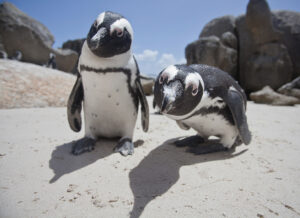Emperor penguins have experienced a disastrous breeding failure, Antarctic researchers reported late last week. Satellites indicate that “anomalous” sea ice loss — which has occurred every year since 2021 — was likely the driving factor that killed over 9,000 fledgling penguins as of the 2022 breeding season.
Several penguin colonies in the study area, which harbors several thousand breeding pairs of birds across multiple sites, lost their entire broods of chicks. The lost birds froze to death or drowned in the Antarctic Ocean before fledging.
Approaching extinction
Researchers published the grim report on August 24 in the journal Communications Earth & Environment. In it, they acknowledged the catastrophic summer looks like an episode in the emperor penguin’s rapidly-approaching extinction.
The iconic species needs stable ice each year between April and January for reproductive success. After locating their preferred nesting sites in early spring, they lay their eggs between May and June. Chicks hatch in late summer after 65 days of incubation, then fledge (or grow their waterproof feathers) during December and January.
Before they develop that specialized plumage, they’re susceptible to freezing or drowning. Without substantive ice cover over the ocean, the chicks cannot survive.
Co-led by Peter Fretwell, a researcher at the British Antarctic Survey, the study used satellite imaging to track five colonies of emperor penguins in the central and eastern Bellinghausen Sea. The method is well-ingrained, scientists have used it to count penguin populations in the area for 14 years.
Thin ice has persisted for each of the last three years and it now appears conditions have become dire for the emperor penguin.
Total breeding failure
“Of the five breeding sites in the region all but one experienced total breeding failure after sea ice break-up before the start of the fledging period of the 2022 breeding season. This is the first recorded incident of a widespread breeding failure of emperor penguins that is clearly linked with large-scale contractions in sea ice extent,” the paper explained.
Antarctica is the emperor penguin’s only habitat. The world’s largest penguin, the current population numbers about 300,000 breeding pairs. Scientists recognize 62 known penguin colonies. Of those, Fretwell told the Associated Press that low sea ice levels last year harmed around 30 percent of those, and 13 “likely failed entirely.”
It’s possible that colonies could adapt by finding new breeding locations, he said. But while they may recover from one or two bad seasons, their future looks bleak. The study references multiple assessments that, if current global warming trends persist, over 90% of emperor colonies will be “quasi-extinct” by the end of the century.
Fretwell put it simply: “If you look further out down the line, how many suitable places will be left?”






